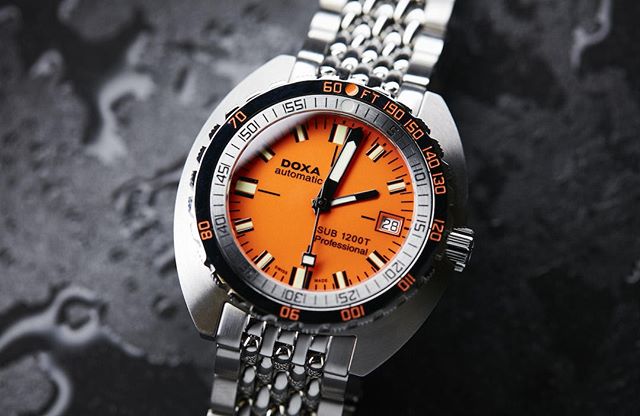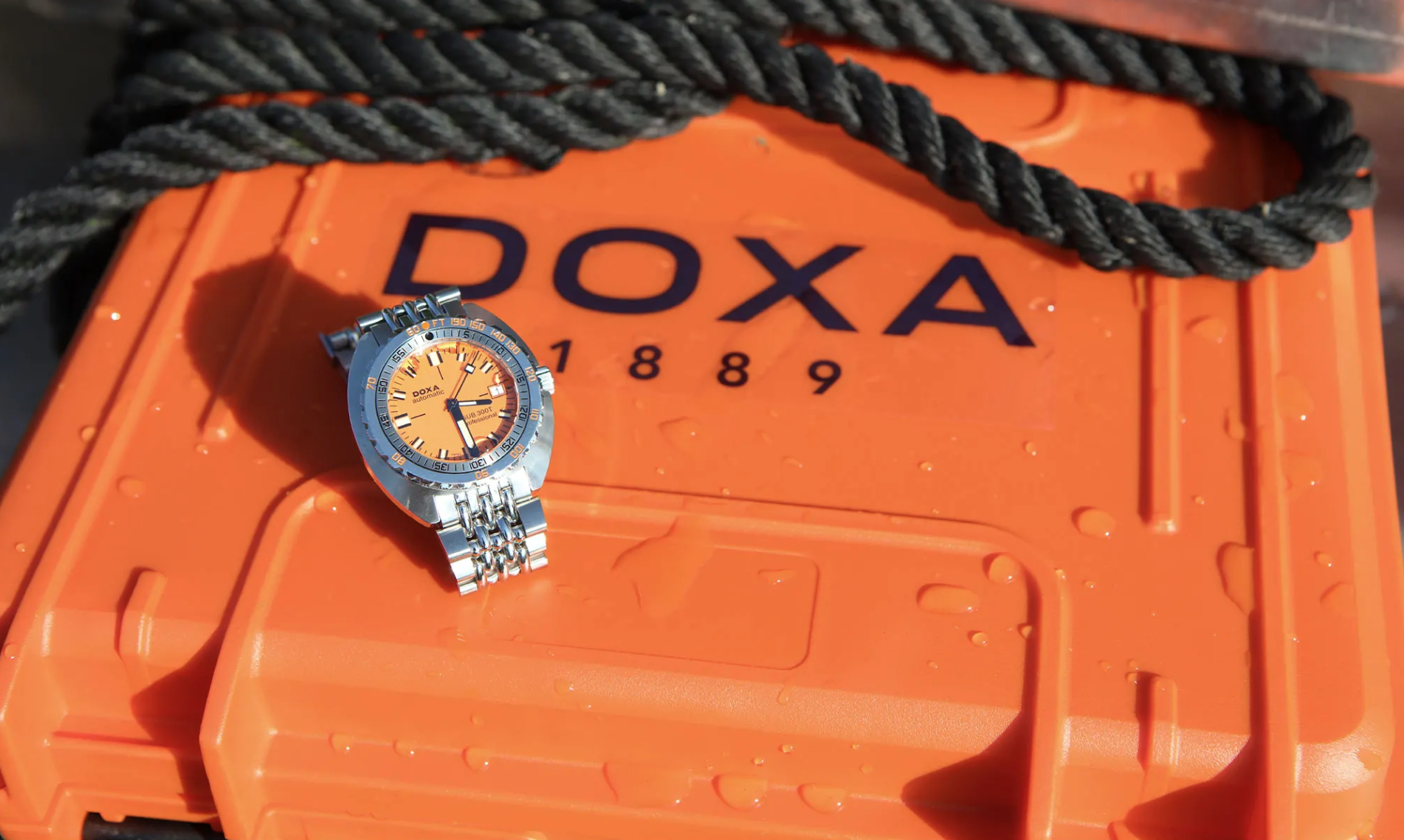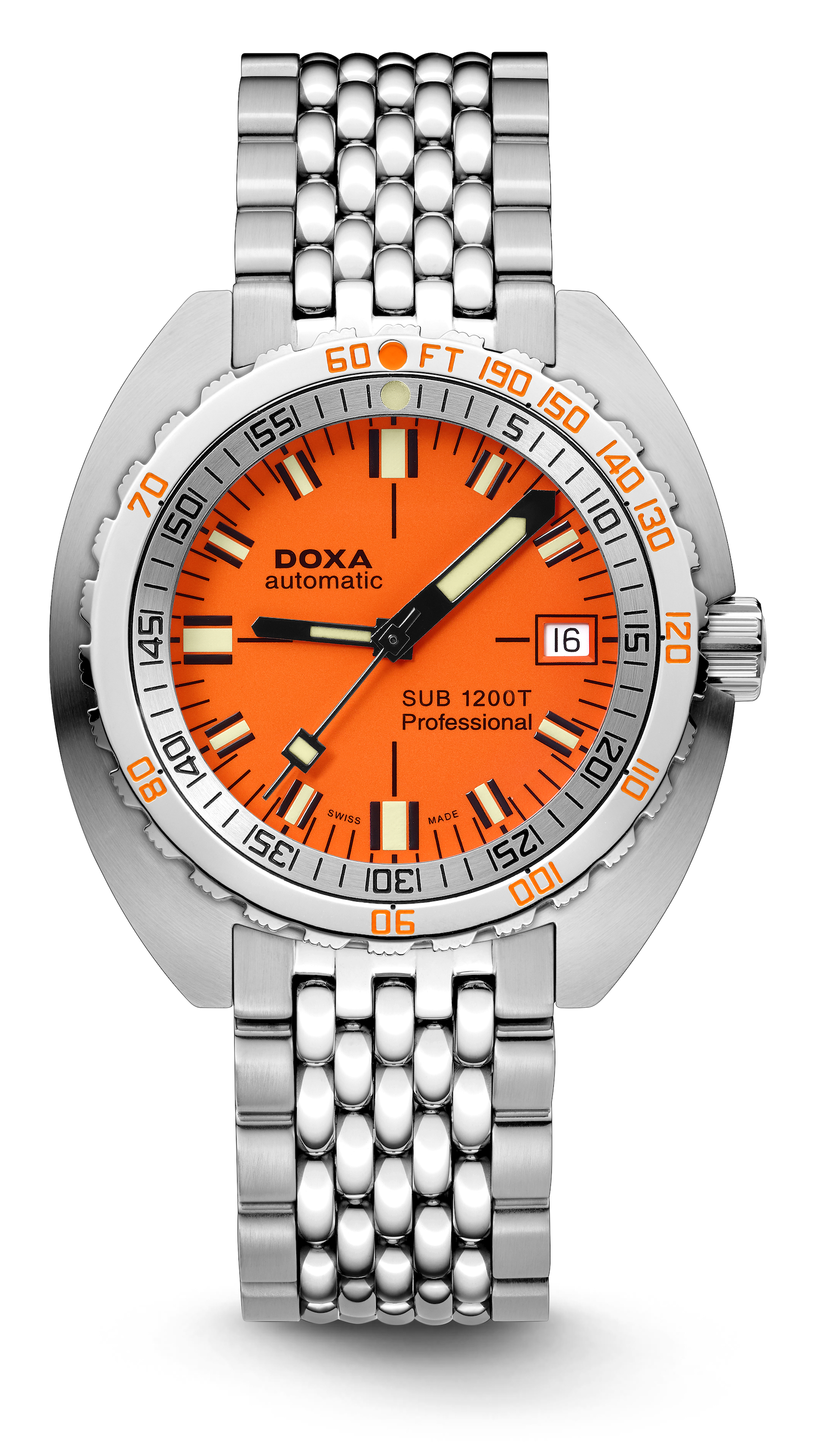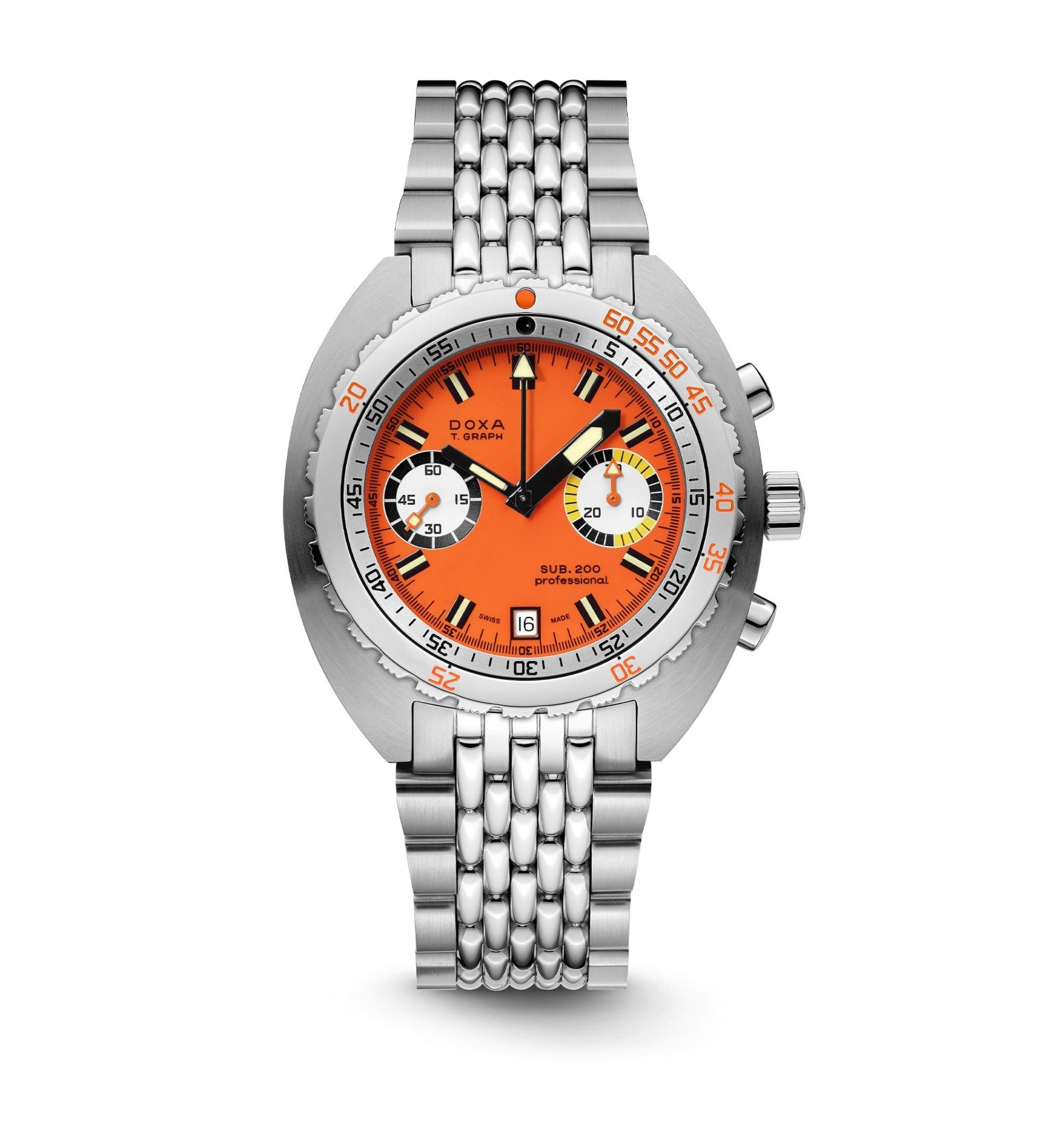A short history of DOXA, the brand that was almost lost to history
Time+TideThe dusty shelves of antique stores and less-trafficked avenues of eBay are full of watch brands whose glory days are well behind them. DOXA, who date their history back to 1889, was almost one of those brands. But thankfully, the name persevered, and DOXA is still with us today, and the brand’s future looks bright – almost as bright as their famous orange dials.
The history of DOXA is one that’s best told in two chapters. The first is the late 19th century story of a brand that began, like so many, in the Jura Valley – the heartland of Swiss watchmaking. Georges Ducommun quickly built DOXA into a brand with a strong reputation for reliability and innovation, including their eight-day calibre – patented in 1908 – which became widely used in dash-mounted clocks in automobiles and planes. But DOXA’s main moment didn’t come until some years later, in 1967 to be precise.
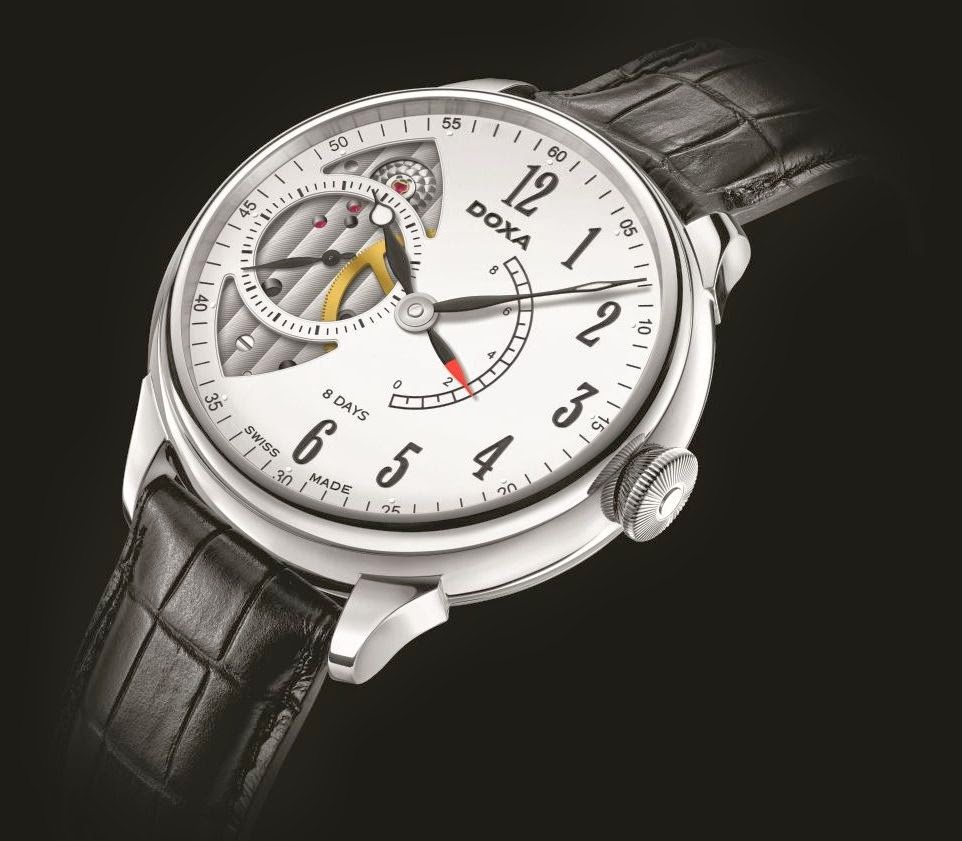
But before we go into the specific details in which the iconic DOXA SUB was born, let’s talk a little about the dive watch more broadly. While watches made to survive the rigours of the underwater environment existed in the early 1900s – the Rolex Oyster case first made its mark in 1926, and famously crossed the channel on the wrist of Mercedes Gleitze a year later – it wasn’t until the grim necessities of the Second World War that the genesis of the modern dive watch was born. In the life or death environment of cutting-edge technology made to sink tonnage of shipping, and the men who wore them, reliability and precision under pressure took on a whole new meaning. Out of this grim, murky theatre of war, the fundamentals of what would become the ‘dive watch’ became defined.
Almost a decade after the war ended, models like the Blancpain Fifty Fathoms (1953) and the Rolex Submariner (1954) became commercially available. But these watches are very professional in nature. However, the world of diving was becoming increasingly democratised – improvements in dive gear technology and availability (like the invention of the Aqua-Lung in 1943 and the wetsuit in 1952), along with a corresponding boom in popular culture representations of diving, led to a shift that saw diving become a popular recreational activity. And with this shift came a boom of specialist dive equipment made with this new breed of sports divers in mind.
And this is where DOXA, and their iconic SUB 300 comes in. The SUB 300 was purpose-built, from the ground up, as a dive watch. And while several of the design features of the watch spoke to the environment in which it was conceived – that broad, cushion-shaped case (made from a single piece of steel), the angular hands and markers, the charmingly floppy ‘beads-of-rice’ bracelet – several features stood out. Most obviously the orange dial, injecting a welcome dose of colour into the underwater world, the theory being that orange was more visible at depth. On top of that, the clasp of the DOXA’s bracelet came with a spring- loaded diver’s extension, a very wearer-friendly solution. And finally, the bezel of the SUB 300 looked like nothing that had come before. In addition to the elapsed time scale, there was a secondary read-out, on which the diver could read the United States Navy No-Decompression dive chart, an essential tool in pre-dive computer diving.
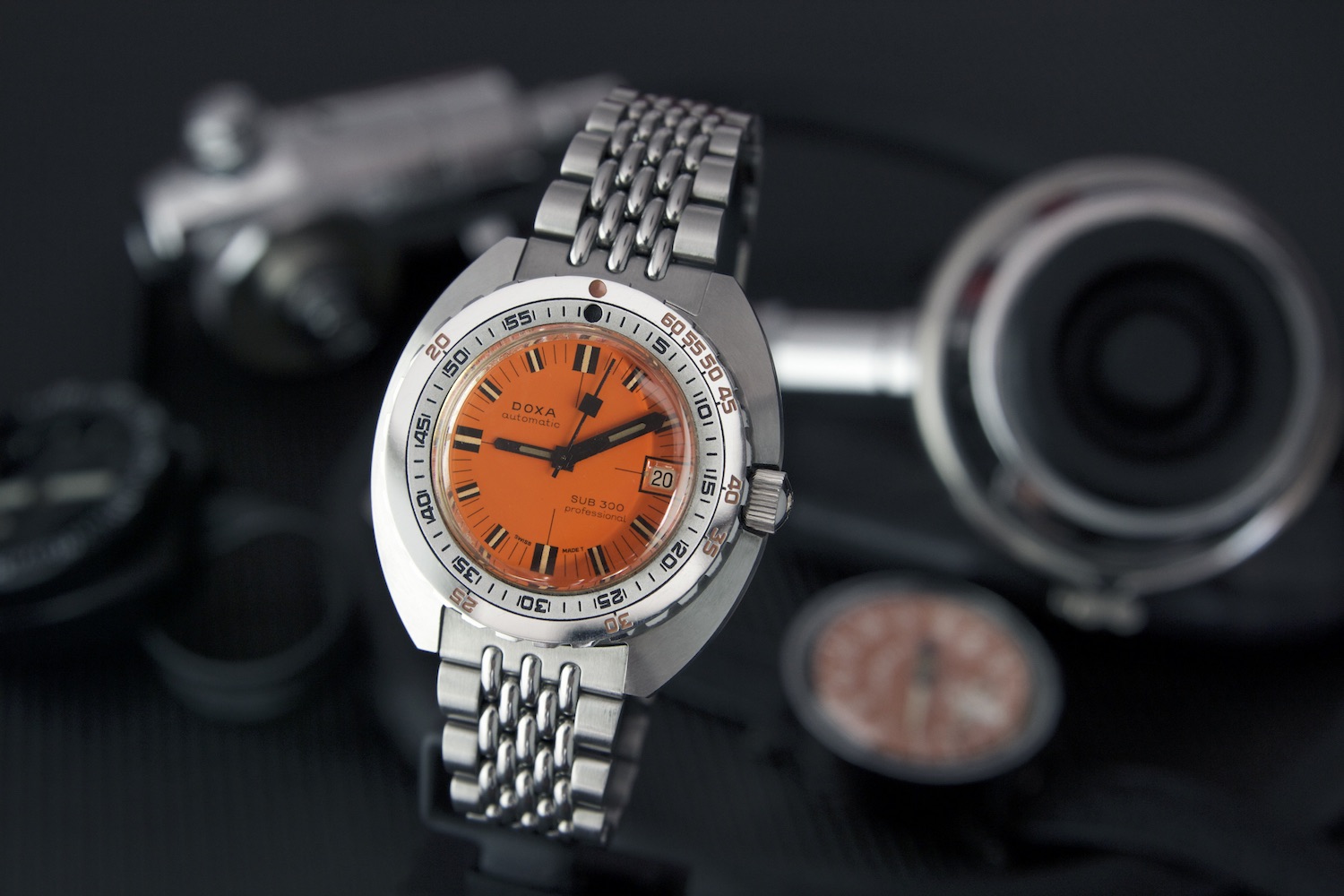
There’s no denying the quality made the watch a success in its own right, and led to a swathe of other models and innovations, like the twin-register chronograph the T.Graph, and Conquistador, which is the first commercially available watch with a helium escape valve. Both these watches were released in 1969. And while impressive, innovative products were fundamental to the brand’s success, famous friends played a part. And DOXA had two particularly good friends, one real and one imaginary.
Few figures loom larger in the world of diving than Jacques-Yves Cousteau. Through his numerous films, documentaries and missions – such as the Oscar-winning The Silent World (1956) – the French oceanographer opened up the undersea world, and the importance of conserving it, to huge global audiences. And in many of these missions, Cousteau, along with his crew, wore distinctive, orange-dialled DOXA divers. In fact, Cousteau was such a fan of the brand that he made a deal to become the sole distributor of DOXA in North America, and many of these watches featured the distinctive Aqua-Lung logo on the dial.
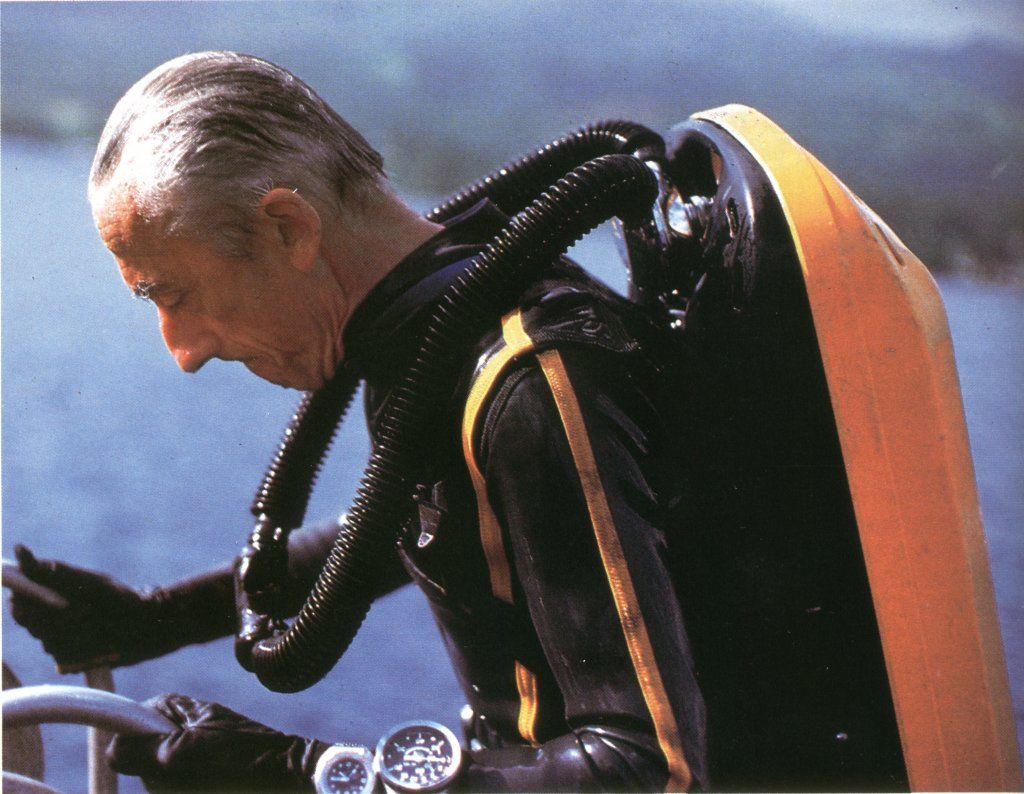
While Cousteau is without doubt DOXA’s most famed real-world wearer, the brand also has a powerful fictional advocate. Clive Cussler is a best-selling adventure novelist, who died last month. His most famous creation was Dirk Pitt, an underwater adventurer who’s a cross between James Bond and Indiana Jones. And on Dirk Pitt’s wrist? What else but an instantly recognisable, orange-dialled DOXA.
Put all this together and it becomes apparent that DOXA is a dive watch with a difference.
The Models You Need To Know
DOXA SUB 200
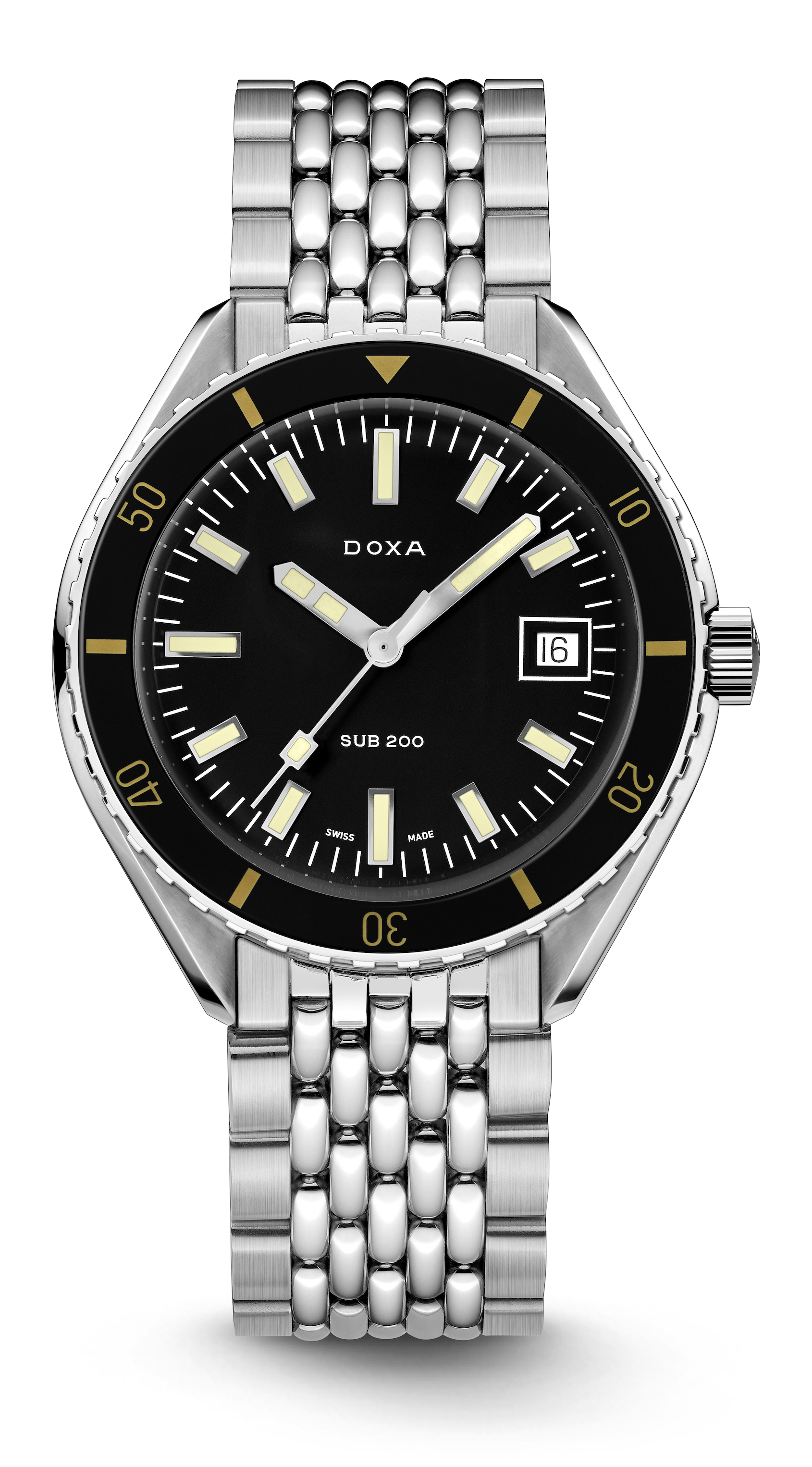
DOXA SUB 1200T
This large and in charge diver is a direct descendant of the original diver, down to the orange dial and broad 42.5mm cushion case. And as the name suggests, this watch packs a hefty water resistance of 1200 metres, and a helium escape valve.
DOXA SUB 200 T.GRAPH
The DOX SUB 200 T.Graph is a special watch, a very limited reissue of the original 1969 T.Graph. Aside from a chronograph that looks like no other, the real unique feature here is the movement, which is a powered by historic Valjoux 7734 movements that are more than 30 years old and have been fastidiously reconditioned for modern use.




